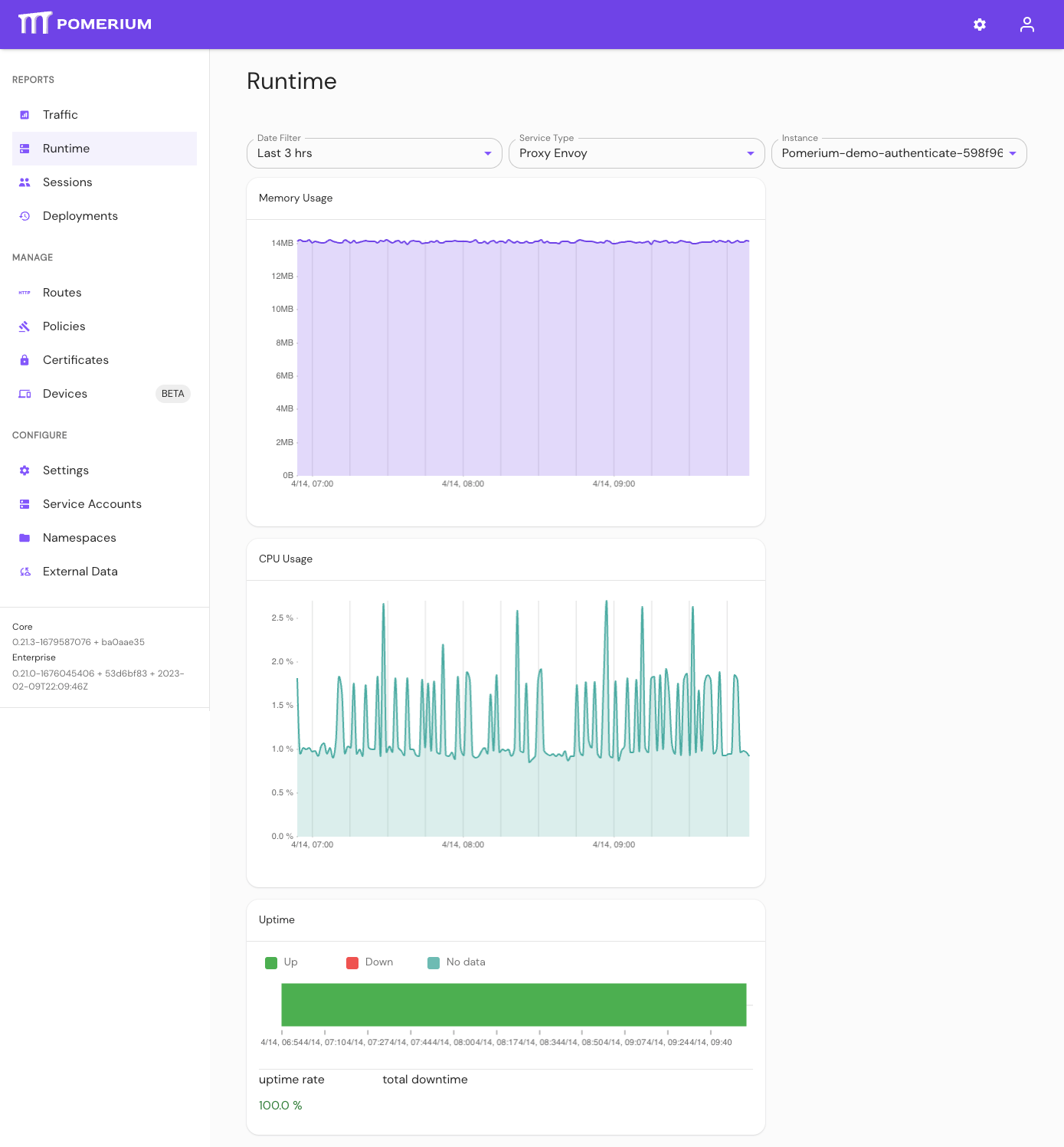Telemetry & Metrics in Pomerium
Metrics in Pomerium provide observability and monitoring data from your Pomerium deployment. Use metrics to review traffic and its effects on your system.
Pomerium exposes standard Prometheus metrics related to its operation. Open-source users must configure metrics collection and visualization manually.
Pomerium Zero and Pomerium Enterprise provide simplified, built-in metrics collection and visualizations.
Metrics definitions
- Traffic: requests proxied by Pomerium to routes defined in a Pomerium deployment.
- Route: the location of an upstream service protected behind Pomerium. At a minimum, a route consists of a From URL and a To URL.
How metrics work
Pomerium collects and aggregates traffic data from your Pomerium deployment. This data includes the:
- request size, duration, and rate
- number of authorized and denied requests
- response code distribution
You can view and filter this data in your traffic dashboard to gauge how much demand is placed on your server.
Filter metrics
Time range and routes
Pomerium stores traffic metrics up to the last 30 days of usage. You can filter traffic by time range and routes.
The following time ranges are supported:
- Last 30 days
- Last 2 weeks
- Last 7 days
- Last 24 hours
- Last 12 hours
- Last 3 hours
- Last hour
- Last 15 minutes (Enterprise only)
When filtering by route, select:
- All Routes to review aggregated traffic metrics across all routes defined in your Pomerium deployment.
- an individual route to review aggregated traffic metrics for that route.
- Zero
- Enterprise
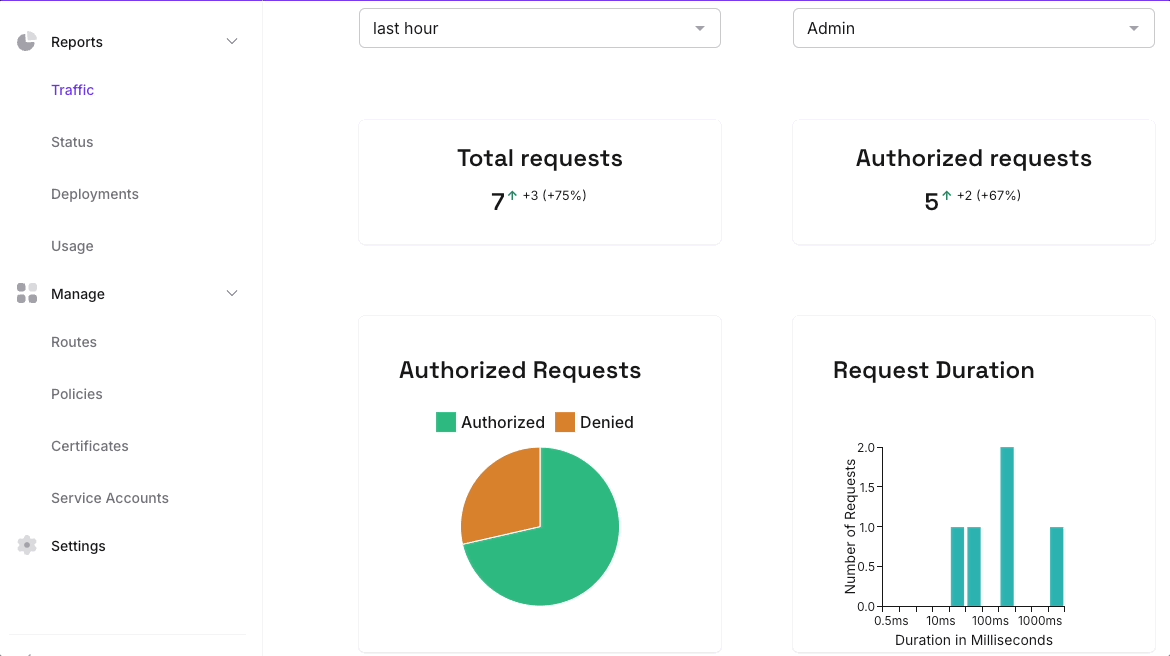
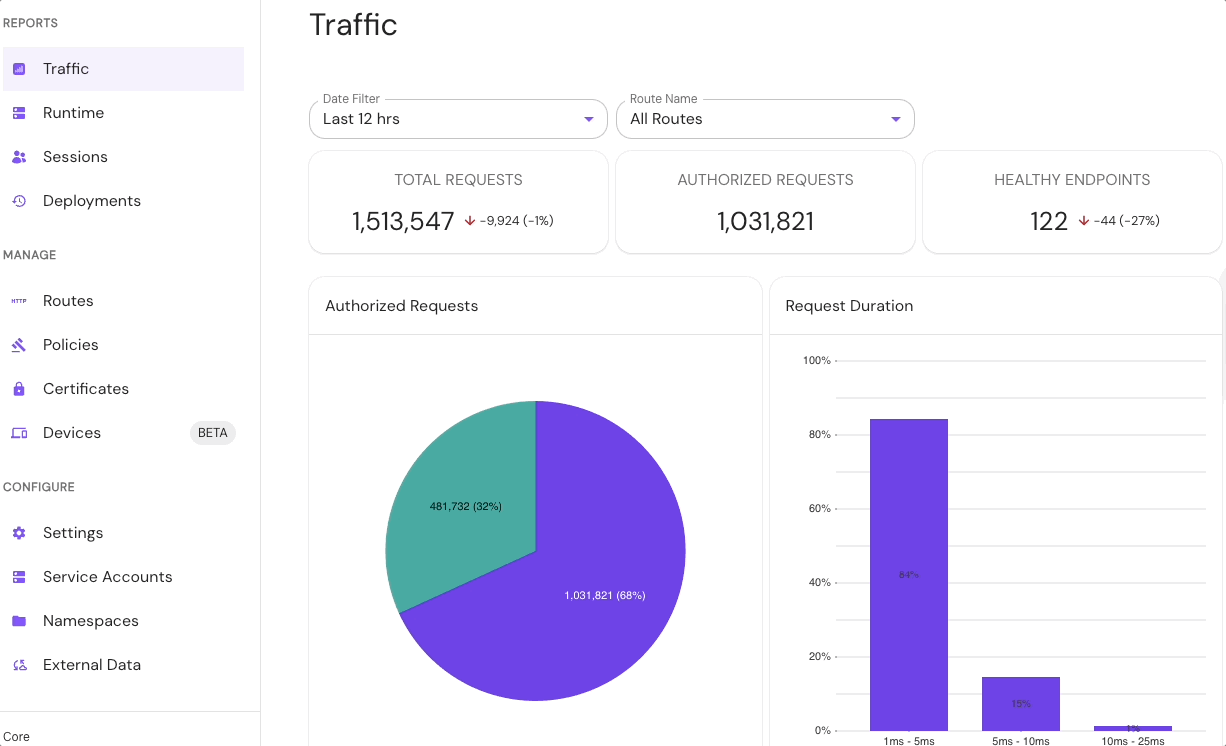
Traffic dashboard
- Zero
- Enterprise
Pomerium Zero collects traffic metrics at the cluster level, which includes active replicas. To review the traffic dashboard in Pomerium Zero:
- In the left-hand sidebar, select Reports.
- Select Traffic.
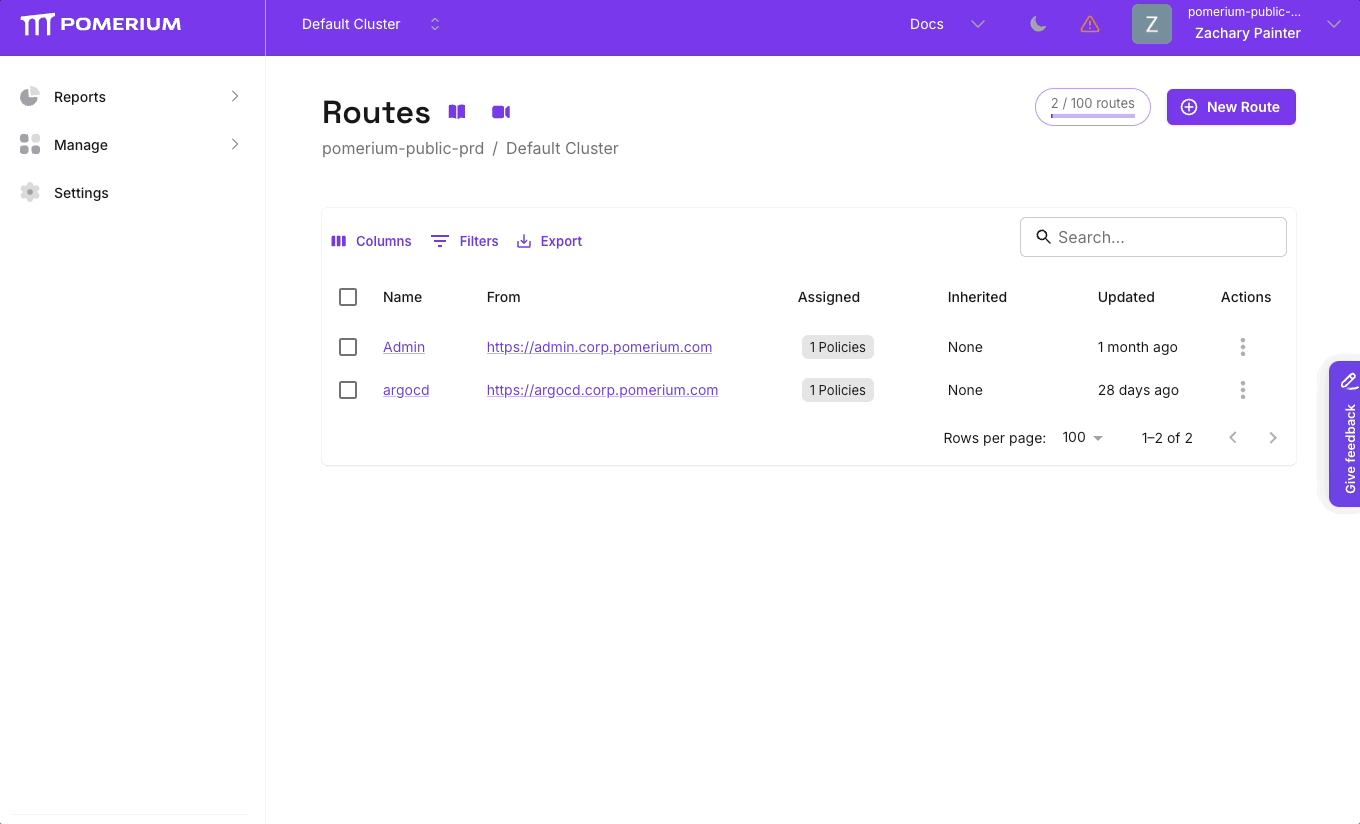
When you access the Enterprise Console, you'll land on the traffic dashboard. Pomerium Enterprise organizes traffic metrics in your deployment with namespaces.
Namespaces follow a hierarchical system. You can view traffic metrics for all namespaces, or a specific namespace, using the namespace dropdown menu. You can filter by:
- Global namespace, which encompasses all namespaces in your deployment.
- Parent namespace, which includes child namespaces (if any).
- Child namespace, which displays metrics only for that namespace.
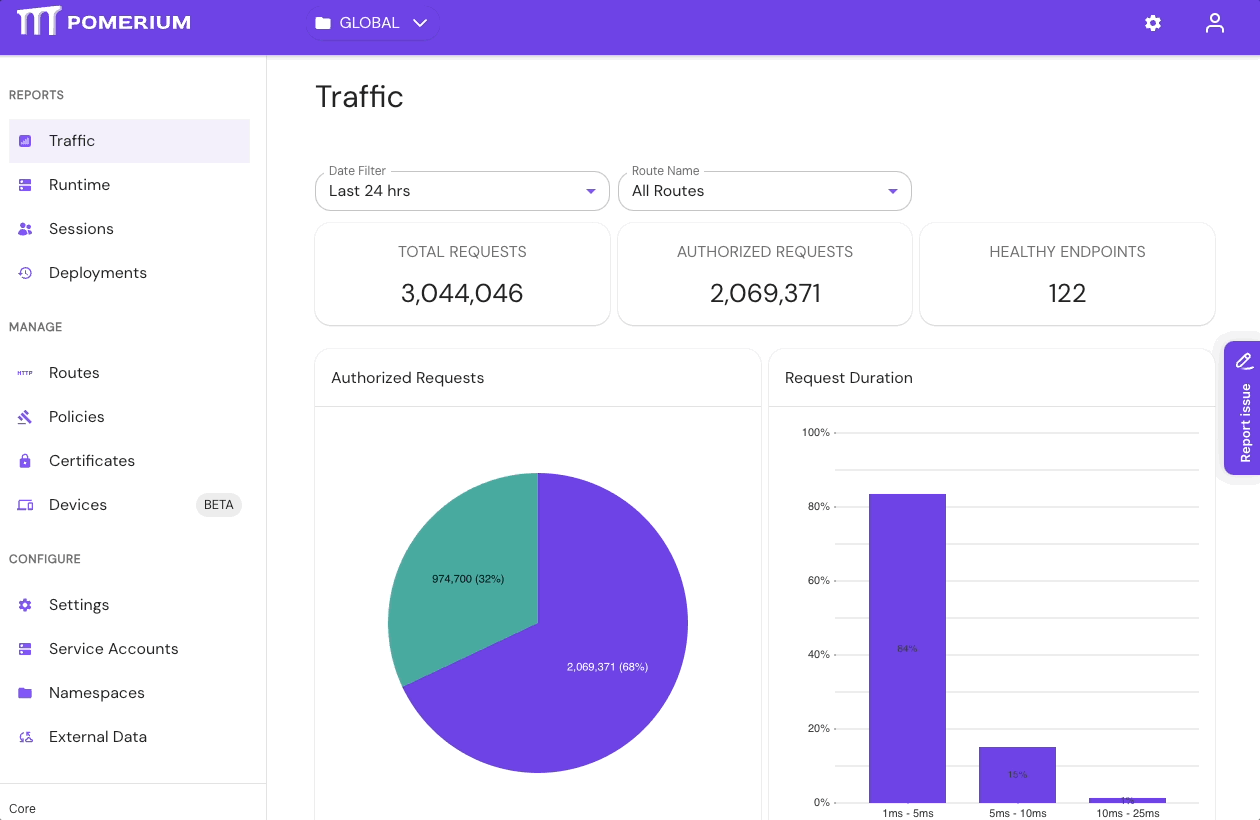
Pomerium Enterprise
In Pomerium Enterprise, you must configure metrics before you can view them. Metrics are not enabled by default, and are not required to run Pomerium Enterprise. See the Configure Metrics guide to enable metrics in your Enterprise deployment.
Total and Authorized requests
- Zero
- Enterprise
The Total requests chart shows the total number of proxied requests. The Authorized requests chart shows the total number of requests Pomerium authorized and forwarded to an upstream service.
Both charts display the difference in requests between the selected and previous time ranges.
The Authorized Requests pie chart displays the total number of authorized and denied requests. 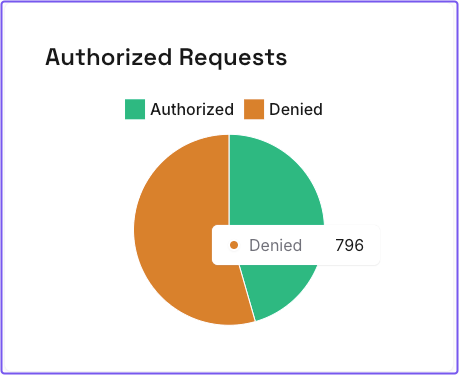
The Total requests chart shows the total number of proxied requests. The Authorized requests chart shows the total number of requests Pomerium authorized and forwarded to an upstream service.
The Healthy Endpoints chart displays the number of healthy upstream endpoints, and roughly correlates with the number of routes defined in your deployment.
For example, if a route's To definition includes multiple upstream resources, Pomerium includes these resources in the total sum of healthy endpoints. Pomerium excludes unhealthy endpoints from this total. See Load Balancing - Active Health Checks and Passive Health Checks for more information.
The Authorized Requests pie chart displays the total number of authorized and denied requests.
The Healthy Upstream Endpoints graph shows you the number of healthy endpoints over time. A dip in the graph denotes unhealthy endpoints.
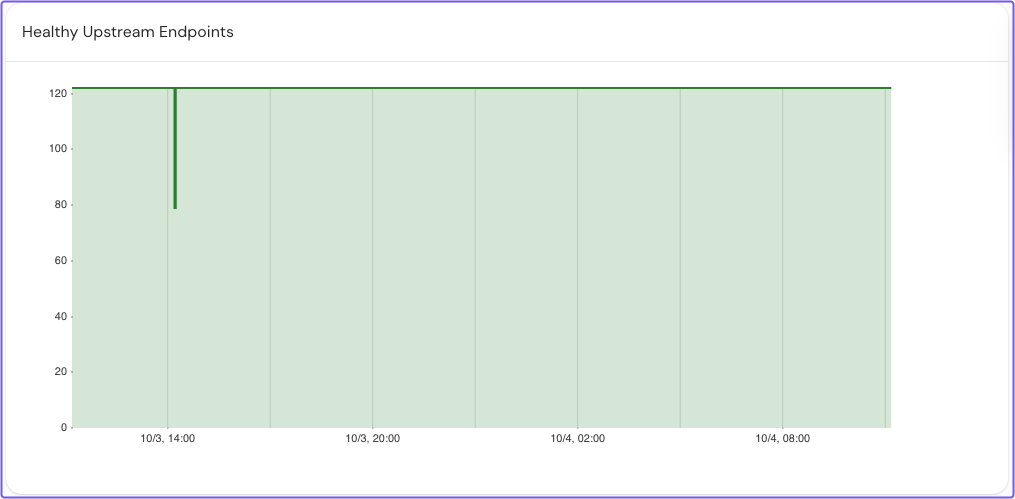
Request durations
- Zero
- Enterprise
Request duration measures the amount of time it takes Pomerium to proxy a request in milliseconds (ms). Pomerium Zero provides two request duration charts:
The first chart organizes requests by duration ranges defined along the x-axis. Pomerium sums the total value of requests within each range and calculates the amount as a percentage value.
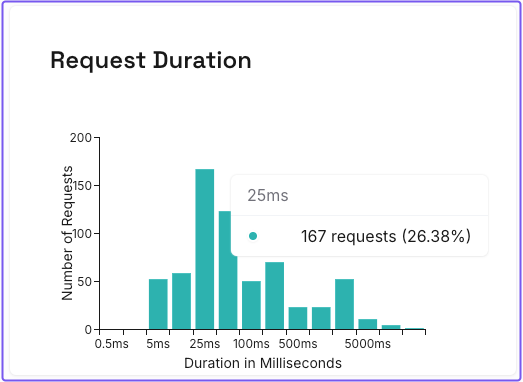
The second chart organizes requests by percentile ranges, date, and time.
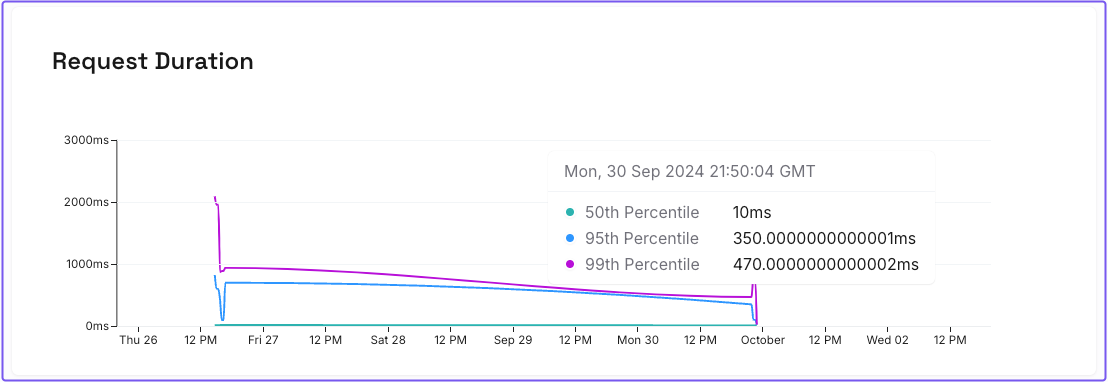
Request duration measures the amount of time it takes Pomerium to proxy a request in milliseconds (ms). Pomerium Enterprise provides two request duration charts:
The first chart organizes requests by duration ranges defined along the x-axis. Pomerium sums the total value of requests within each range and calculates the amount as a percentage value.
The second chart organizes requests by percentile ranges, date, and time. You can select a specific percentile range to view more granular data in that range:
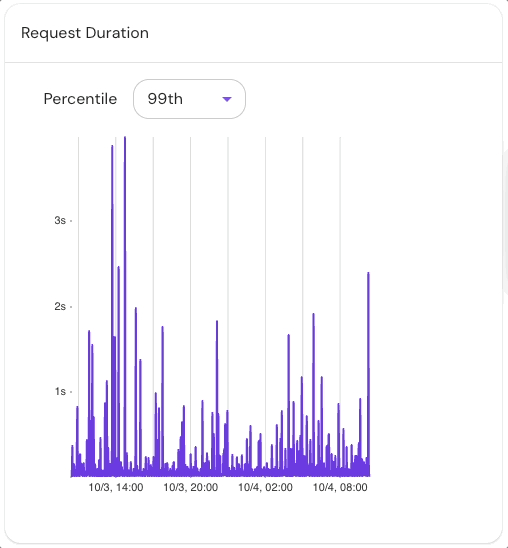
Requests rate and response codes
- Zero
- Enterprise
The Requests per second chart calculates the average amount of proxied requests per second over the span of an hour. Requests are organized by date and time, and categorized by the following response status codes:
- 200s (200-299): successful responses
- 300s (300-399): redirection messages
- 400s (400-499): client error responses
- 500s (500-599): server error responses
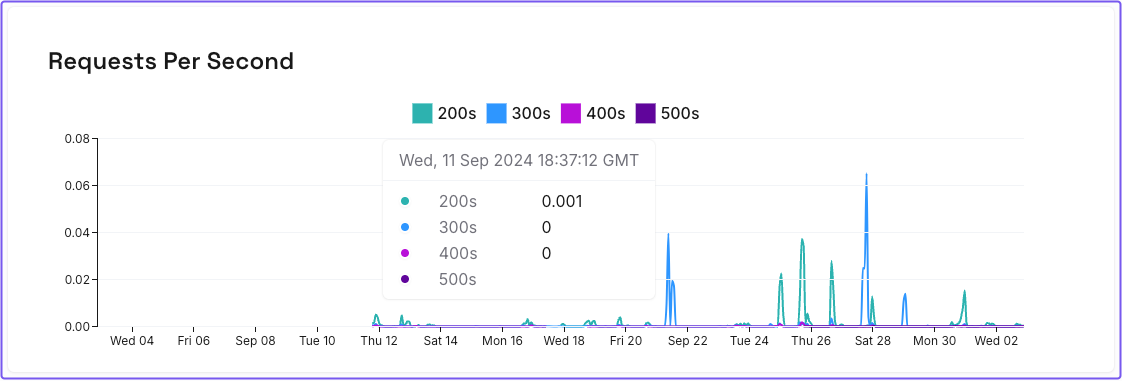
The Request Rate chart calculates the average amount of proxied requests per second over the span of an hour.
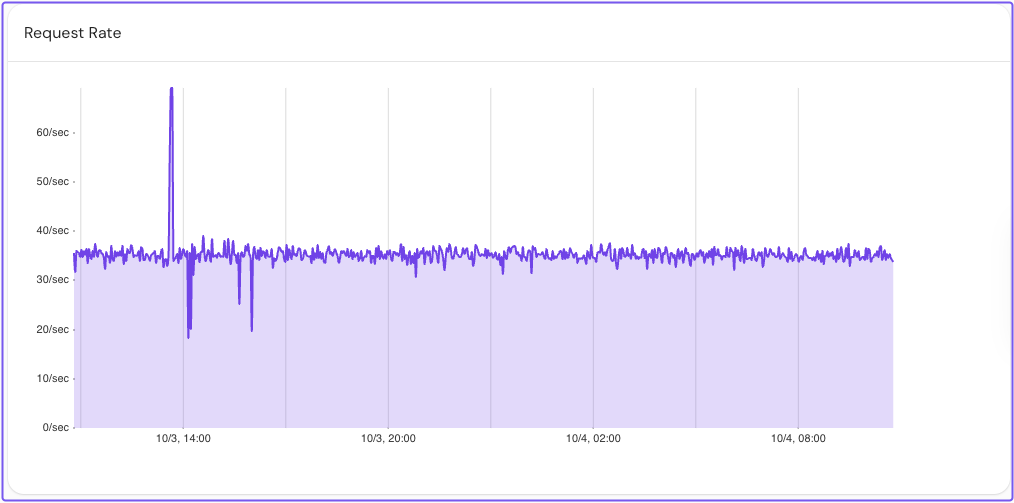
The Response Codes chart organizes requests by date and time, and categorizes them with the following response status codes:
- HTTP 2xx (200-299): successful responses
- HTTP 3xx (300-399): redirection messages
- HTTP 4xx (400-499): client error responses
- HTTP 5xx (500-599): server error responses
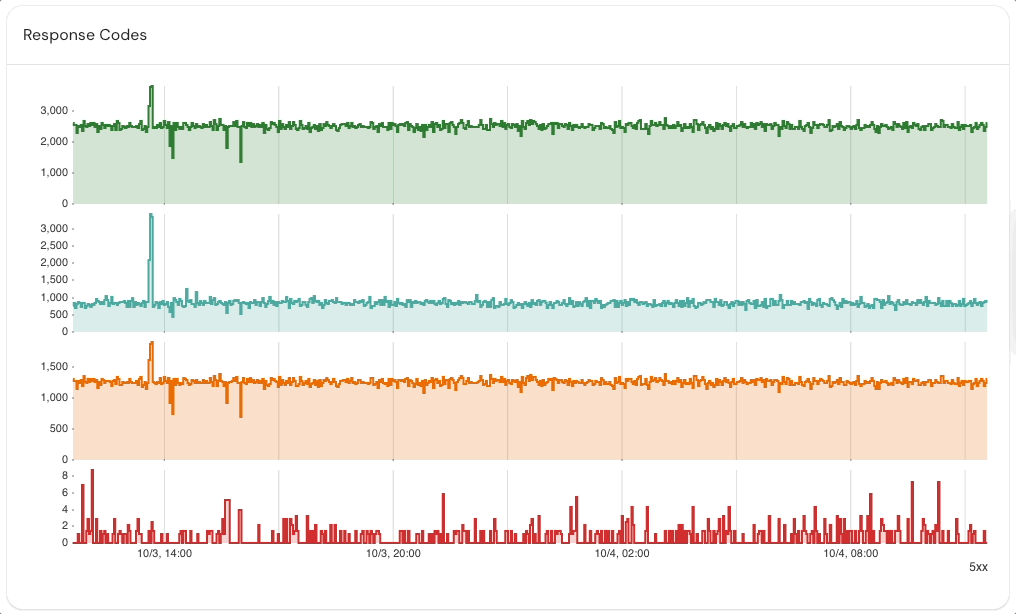
Bytes sent and received, request size
- Zero
- Enterprise
The Bytes sent and Bytes received charts display the average amount of bytes sent and received over the span of an hour.
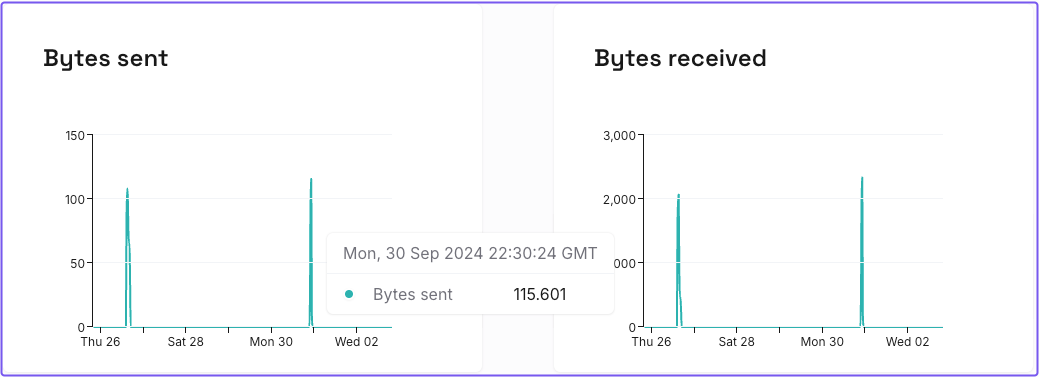
The Request Size chart organizes requests based on their request size measured in kilobytes (KB).
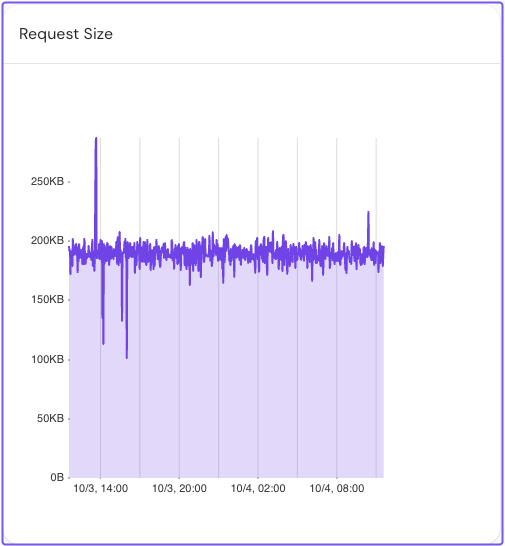
Runtime dashboard
- Zero
- Enterprise
Runtime metrics are not supported in Pomerium Zero.
In the Runtime dashboard, you can monitor how many system resources Pomerium is consuming. Filter by date range, service, and instance.
